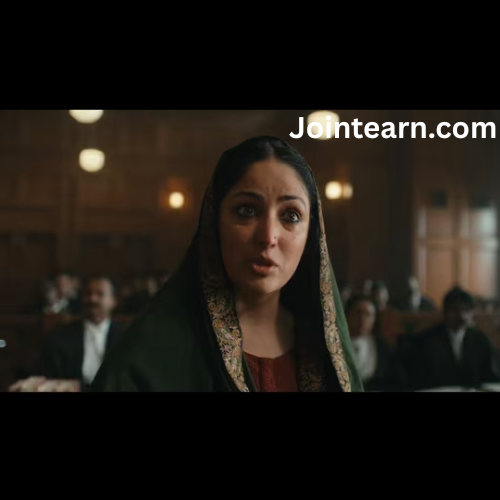Bihar, long regarded as the heartland of backward caste politics, is witnessing an unexpected twist in the ongoing 2025 assembly elections. For over three decades, the state’s political landscape has been dominated by Other Backward Classes (OBCs) and Extremely Backward Classes (EBCs), together accounting for more than 60% of Bihar’s population. This demographic reality has shaped political narratives, electoral strategies, and welfare policies in the state, ensuring that backward caste solidarity remains a central feature of Bihar’s politics.
However, a detailed examination of candidate distribution by the major political parties in this year’s elections reveals a surprising trend: upper caste candidates, once politically marginalised in the post-Mandal era, are making a notable comeback. This marks a significant shift in Bihar’s electoral calculus, reflecting evolving strategies to capture a wider voter base in a politically competitive landscape.
BJP’s Upper Caste Push
The Bharatiya Janata Party (BJP), which is contesting the elections as part of the National Democratic Alliance (NDA), has allocated 49 out of 101 seats under its formula to upper caste candidates. This accounts for nearly half of the seats the party is contesting, highlighting the party’s deliberate effort to revive the political presence of forward castes in Bihar. Among these, Rajputs account for 21 candidates, Bhumihars 16, Brahmins 11, and Kayasthas one.
Despite this, BJP has sought to maintain a caste balance through its alliance with the Janata Dal (United), whose ticket distribution continues to favor OBCs and EBCs, reflecting the party’s historical support base. Yet, the BJP’s strategy appears to be aimed at consolidating upper caste votes that could otherwise drift toward other political options, particularly with the changing dynamics in Bihar’s urban and semi-urban constituencies.
JD(U)’s Strategic Reorientation
The Janata Dal (United), traditionally reliant on backward caste support, has also increased its upper caste representation. Of the 101 seats JD(U) is contesting, 22 have been allocated to upper caste candidates, representing 21.78% of its total tickets. This is an increase from the 17.39% in the 2020 assembly elections.
Political analysts see this as a tactical move by JD(U) to broaden its appeal beyond its core EBC, OBC, and Dalit base. By including more upper caste candidates, the party aims to strengthen its vote share in constituencies historically associated with influential forward caste figures. A notable example is the party’s focus on the Mokama constituency, a seat with a strong Bhumihar presence. Union minister and former JD(U) president Lalan Singh, a prominent Bhumihar leader, has been actively campaigning for the party’s candidate there, underlining the importance of this voter segment.
Congress Joins the Fray
The Congress, seeking a revival in Bihar after its last governance stint between 1984 and 1989, has also embraced a similar strategy. The party has fielded 33 upper caste candidates, comprising 11 Bhumihars, nine Brahmins, nine Rajputs, and four Kayasthas. This is part of an attempt to reestablish a presence among affluent and influential communities in the state while trying to regain lost ground in traditional Congress constituencies.
Meanwhile, Congress’s Mahagathbandhan partner, the Rashtriya Janata Dal (RJD), which remains committed to backward caste representation, has fielded 75 OBC candidates out of 142 total nominations. However, the RJD has also allotted 16 seats to upper castes, reflecting an acknowledgment of the need for broader social outreach. The party appears to be strategically balancing caste considerations to prevent alienating upper caste voters while maintaining its core support among OBCs and EBCs.
Influence of the PK Factor
Political analysts attribute the re-emergence of upper caste candidates partly to the influence of Prashant Kishor (PK), whose campaigns are credited with reshaping voter strategies across states. NK Choudhary, former principal of Patna College, notes that the RJD’s outreach into the middle-class vote bank has prompted both the BJP and the NDA to recalibrate their seat-sharing and candidate selection. “The PK factor is real. Parties are cognizant of the fact that high-caste voters are being actively courted, and this is influencing ticket distribution,” he said.
Additionally, upper castes constitute around 15% of Bihar’s population, a sizable minority whose votes can prove decisive in tightly contested constituencies. With Muslims accounting for 16.9% and Dalits 16%, political parties are seeking to optimize their appeal to multiple social groups simultaneously.
Historical Context: Mandal Politics and Its Impact
The Mandal Commission and its implementation in 1990 fundamentally transformed Bihar’s political dynamics. By institutionalizing reservations for OBCs in government jobs and educational institutions, Mandal politics elevated the social and political aspirations of backward castes. Leaders like Lalu Prasad Yadav championed backward caste politics, creating a stronghold that dominated the state for decades.
Yet, despite this history, the influence of caste in Bihar’s politics has never been entirely one-dimensional. Political analyst Prabhat Singh points out, “While backward caste politics gained prominence under Lalu Yadav, top-down caste preferences were always in play. Parties had to navigate the complex interplay between grassroots caste allegiances and elite political strategies.”
The resurgence of upper caste candidates suggests that political parties are increasingly considering the economic influence, social stature, and organizational strength of forward caste communities. This move also reflects changing voter expectations and the rising importance of middle-class and aspirational segments in electoral calculations.
Electoral Calculus and Strategic Implications
The 2025 Bihar assembly elections are thus marked by a nuanced approach to caste politics. Parties are attempting to strike a balance between traditional backward caste support and the influential upper caste vote bank. This has resulted in a careful calibration of ticket distribution, with the BJP emphasizing upper caste representation, JD(U) adjusting its strategy to appeal to a broader electorate, and Congress attempting to reclaim high-caste constituencies.
The presence of upper caste candidates across key constituencies could significantly influence electoral outcomes, especially in districts where caste alliances have historically determined voting patterns. Moreover, the inclusion of upper caste candidates is expected to affect coalition dynamics within alliances such as the NDA and Mahagathbandhan, as partners negotiate seat-sharing to maximize overall vote share.
Conclusion: The 2025 Elections as a Turning Point
The ongoing assembly elections in Bihar indicate a strategic realignment in the state’s caste politics. After decades of backward caste dominance post-Mandal, upper castes are witnessing a deliberate revival, not merely as symbolic participants but as central figures in electoral strategies. Parties across the spectrum are recognizing the electoral importance of upper caste voters and are leveraging their influence to consolidate support in competitive constituencies.
While backward caste politics continues to shape the narrative, the increasing visibility of upper caste candidates underscores the evolving nature of Bihar’s electoral landscape. The 2025 elections may well mark a turning point, highlighting the interplay of caste, economic power, and political pragmatism in one of India’s most politically significant states. With the contest underway, the success of these strategies will be closely watched by analysts and voters alike, as Bihar once again becomes a focal point for understanding the dynamics of caste and politics in contemporary India.


Leave a Reply